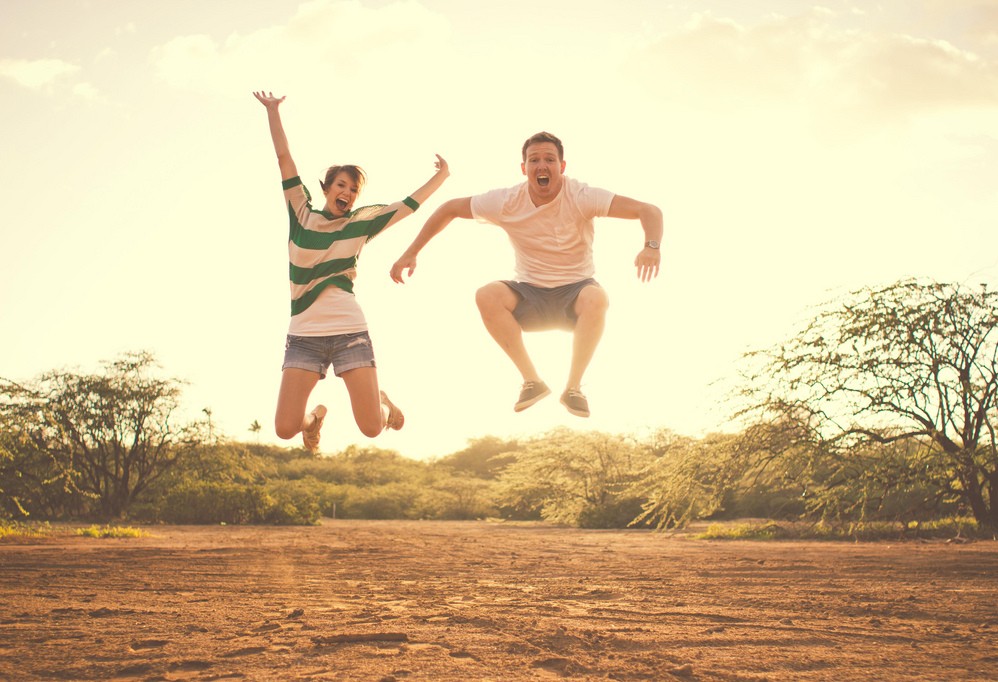
Tuck Jumps
Tuck jumps are a move that requires coordination, agility, strength, balance and explosiveness. Building all those qualities at once makes them a great move anyway: the fact that they requite no equipment makes them a perfect travelers' exercise. Individuals who are already strong may use these to wake up their nervous systems before doing more strength-oriented moves, but a few sets of 10 will actually deliver some strength benefits for a lot of people. Start in a slight crouch, about a quarter into a squat, and jump as high as you can. While you're in the air, bring your knees up towards your chest, then extend your body to land. Repeat. If you're strong enough, you can make these harder by trying to 'bounce' off the ground, spending as little time with your feet down as possible. Expect a cardio workout too!
- Important notification about information and brand names used in this slideshow!
- Photo courtesy of Steven Worster by Flickr : www.flickr.com/photos/stevenworster/7492396416/

Doorway Lateral Raises
These are an isometric exercise or the rotator cuffs. Our rotator cuffs get banged about by sitting badly, or by doing exercises with poor form, and most of us could use a little fixer-upper for them. Here it is, and you can do it anywhere. Stand in a doorway and press the outside of your arms against the doorway sides. Roll your shoulders forward slightly so your little fingers are the highest point of your hand. Try for three sets of 30 seconds with a strong contraction each time to make your shoulders instantly feel both freer and more stable.
- Important notification about information and brand names used in this slideshow!
- Photo courtesy of zoë biggs by Flickr : www.flickr.com/photos/7629986@N06/6345934163/
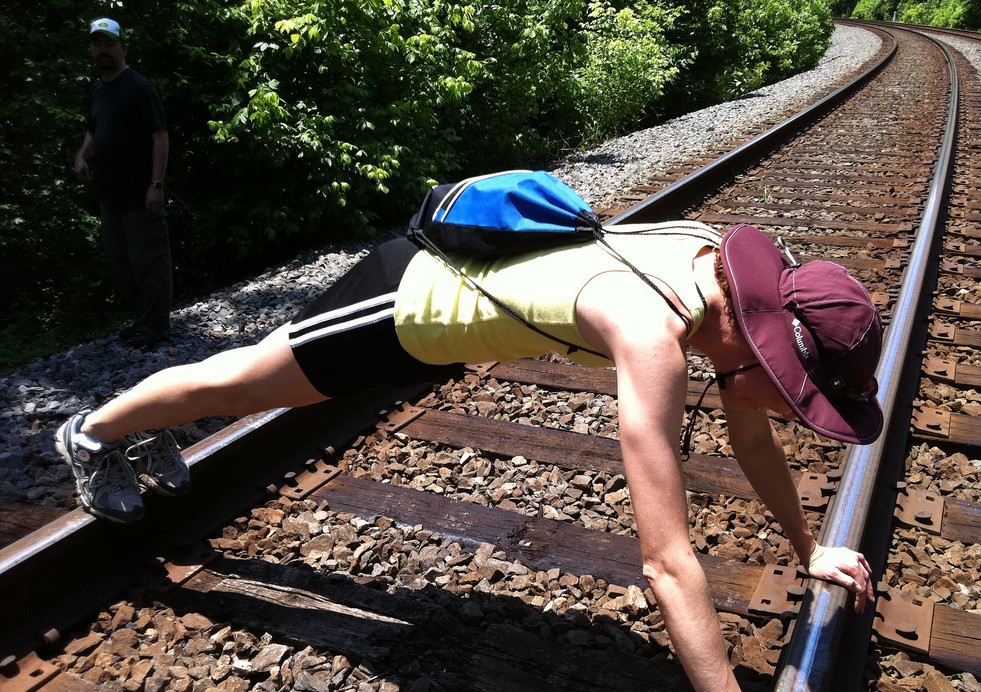
Pushups
Pushups are the ultimate in portable exercises. While they tend to work the chest, shoulders and triceps more than anything else they're a full-body movement if they're done right. Start in the top position with your hands directly under your shoulders and bend your elbows. Try not to let your elbows 'flare' out. Some people prefer to have the elbows touching the sides, others prefer a wider position - but no more than 45° to keep your shoulders healthy. Make a big chest, brace your core and tense your glutes, pull your toes up and push the ground away. For an added challenge, try doing your pushups more slowly, or elevate your feet on a bed, table or chair, depending where you are.
- Important notification about information and brand names used in this slideshow!
- Photo courtesy of Eric Schmuttenmaer by Flickr : www.flickr.com/photos/akeg/5835086586/
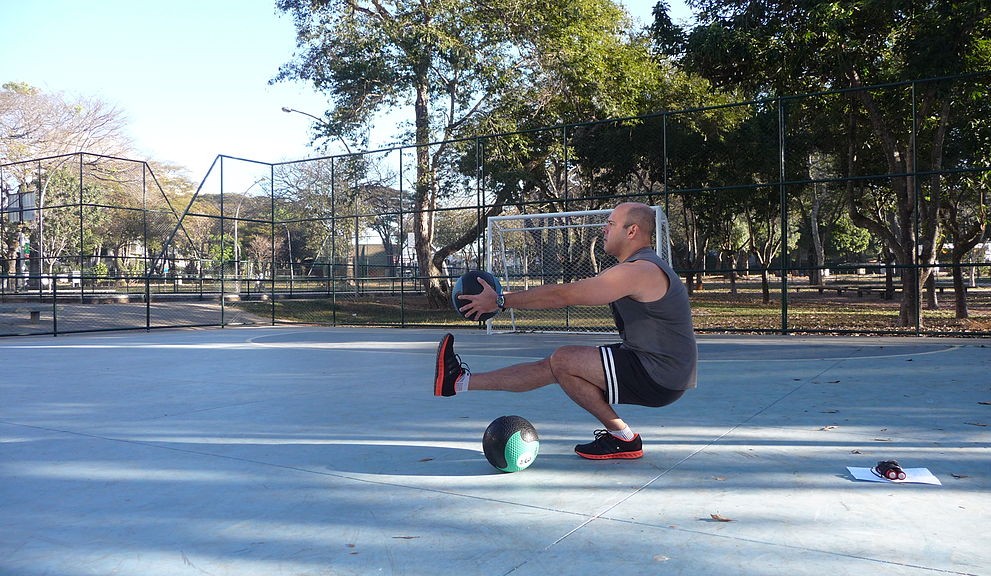
Assisted Pistols
Pistols are hard. Assisted pistols are far easier, though they're only really suitable if you already have a good bilateral squat. If you do, they're a good leg strength exercise that removes a lot of the load on the low back. Some people prefer them to barbell squats, others say they don't have the same benefits, but they don't require much equipment and can be done anywhere. For the easy version, put your hand flat on a firm surface like an unpadded chair or a table, and take the same-side foot of the floor. You can use your had to stabilize you as you squat on the other leg. For intermediates, use a weight. It sounds counterintuitive but pistols are a balance exercise to a large extent and very taxing on the hips. Holding a weight out in front of you in both hands can really help you with your balance and it needn't be a heavy one, so you don't need to travel with a massive dumbbell. A bag or satchel will work fine. If you're confident in your leg strength but not your balance you can try doing hanging pistols - stand on the edge of a desk...
Pistols are hard. Assisted pistols are far easier, though they're only really suitable if you already have a good bilateral squat. If you do, they're a good leg strength exercise that removes a lot of the load on the low back. Some people prefer them to barbell squats, others say they don't have the same benefits, but they don't require much equipment and can be done anywhere. For the easy version, put your hand flat on a firm surface like an unpadded chair or a table, and take the same-side foot of the floor. You can use your had to stabilize you as you squat on the other leg. For intermediates, use a weight. It sounds counterintuitive but pistols are a balance exercise to a large extent and very taxing on the hips. Holding a weight out in front of you in both hands can really help you with your balance and it needn't be a heavy one, so you don't need to travel with a massive dumbbell. A bag or satchel will work fine. If you're confident in your leg strength but not your balance you can try doing hanging pistols - stand on the edge of a desk, for instance, and let your non-supporting leg dangle over the side.
- Important notification about information and brand names used in this slideshow!
- Photo courtesy of Jgcastor by Wikimedia Commons : commons.wikimedia.org/wiki/File:Pistol-squat.jpg
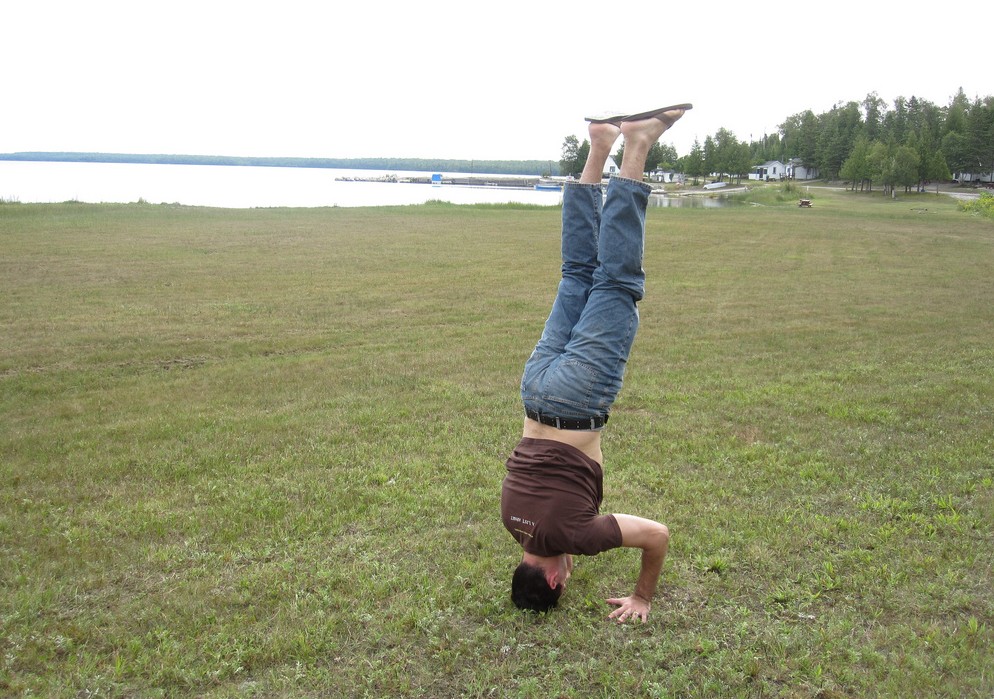
Headstands
Headstands and handstands are a great upper-body strength builder that's easy to do anywhere there's a wall. Once you're up there you can hold for time, do headstand pushups or walk side to side along the wall. To get into the handstand position, start standing facing a wall. You'll lean forward and put your hands on the ground about one to two feet away from the wall, and you'll be in a position like a sprinter on the blocks. Now push with both legs and throw one leg up, using the other to finish the push. The first time you do this, you won't get anywhere but with a little practice and confidence you'll soon be able to stand on your hands, and you'll feel the benefits in your shoulders and back.
- Important notification about information and brand names used in this slideshow!
- Photo courtesy of Patty Ho by Flickr : www.flickr.com/photos/patio/4918178881/
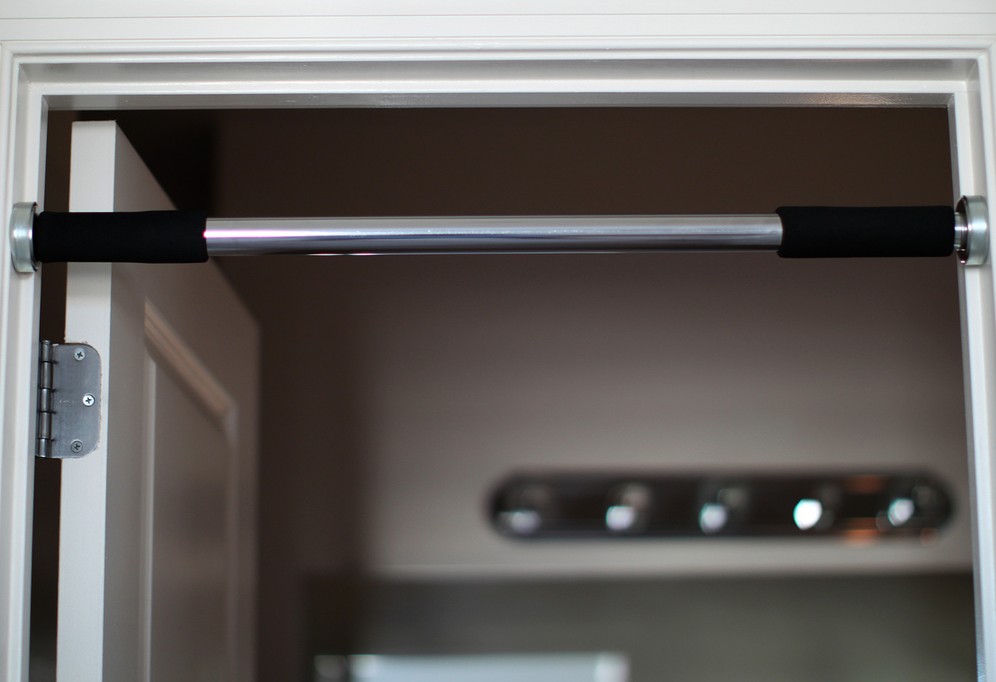
Door Pullups
Door pullups are a workaround for when you can't do pullups because there's no pullup bar, and no space in your luggage to pack one. Put your hands over the top of the door and pull up as usual; this exercise forces a wide-elbow style of pullup on you, which might not be your normal style. If it's not, cut some reps to keep your shoulders safe. If you're big some internal doors won't take your weight, but if you move in a controlled way you should be able to do these on your hotel room door because your weight will be on the door directly, not the hinges, once the bottom of the door touches the floor. If you think it's a risk, put something under the door or give the exercise a miss.
- Important notification about information and brand names used in this slideshow!
- Photo courtesy of Mr.TinDC by Flickr : www.flickr.com/photos/mr_t_in_dc/3662981055/
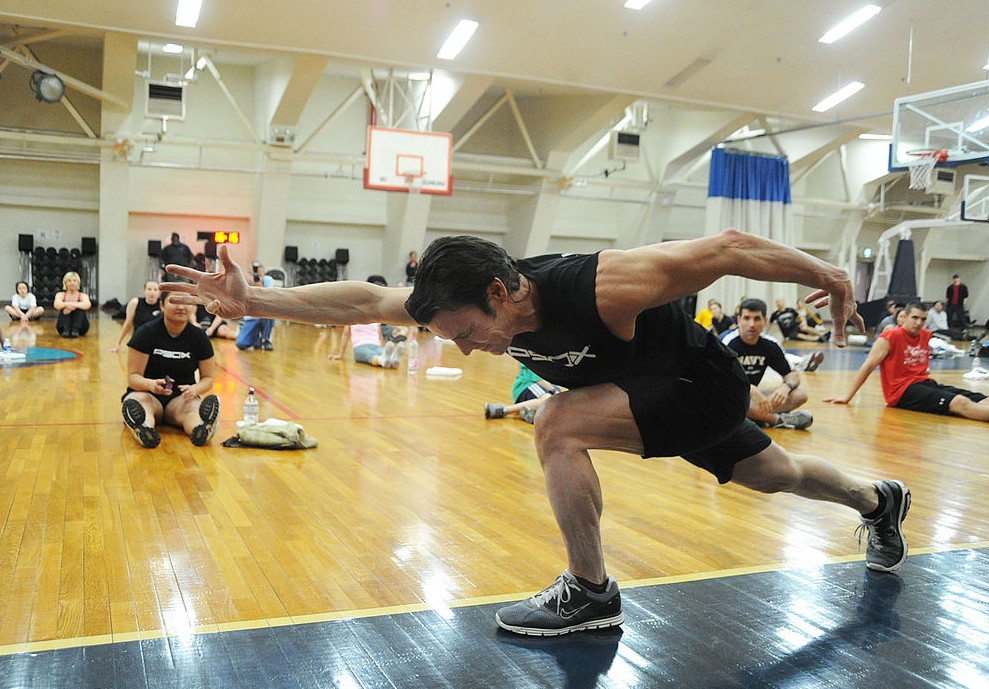
Lunge Complexes
Lunges are a great way to condition legs, glutes, core and hips. This is most personal trainers' go-to lower body exercise because it requires much less skill than a squat. If you're familiar with lunges, try building several lunge styles together to make a lunge complex. For instance, try lunging forward, stepping up with the other foot, then doing a reverse lunge to get back to where you started from. Constantly using slightly different muscles means you won't get fatigued quite as soon, so you can train for longer, spending more time under tension and getting ore training effect. And you don't need any more equipment than a floor!
- Important notification about information and brand names used in this slideshow!
- Photo courtesy of U.S. Navy photo by Mass Communication Specialist 3rd Class Justin Smelley by Wikimedia Commons : commons.wikimedia.org/wiki/File:US_Navy_110203-N-2858S-402_Tony_Horton,_creator_of_fitness_program_P90X,_demonstrates_a_lunge_for_fan
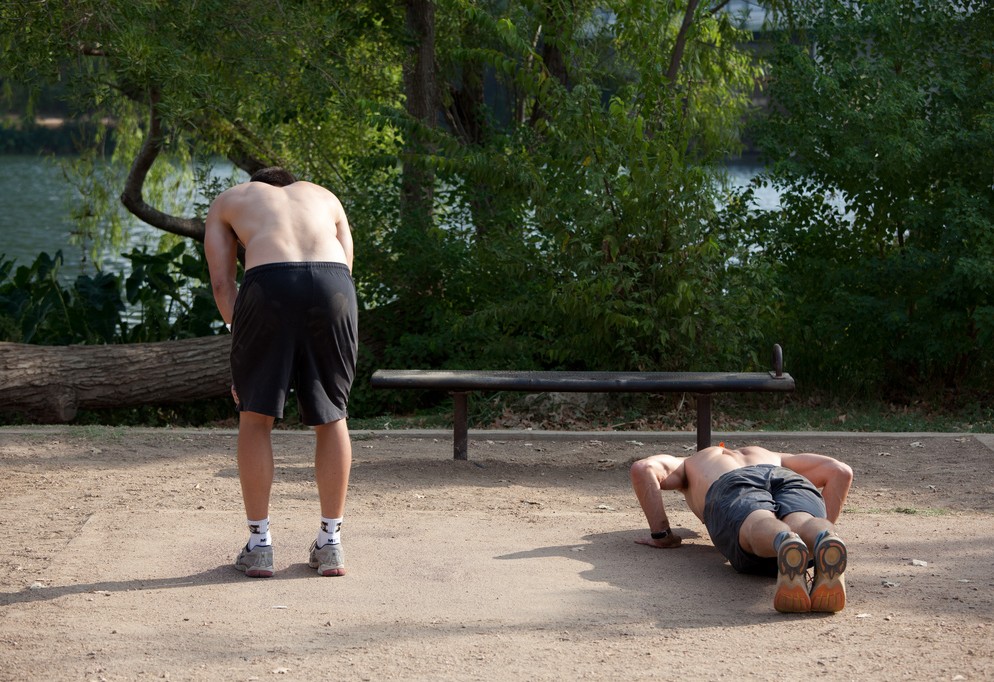
Reverse Pushups
Reverse pushups are easier on your shoulders than regular pushups, but in terms of equipment they require, they're exactly the same. All you need is the floor. Get into a pushup top position with your arms extended. Now, instead of bending your elbows, bend your knees. The balls of your feet should stay on the ground and your weight should come back, but don't let your knees touch the ground. They should be very close to the ground but not touching it at the bottom of the movement. Extend your legs to return to the start position. These should be fluid and rhythmic.
- Important notification about information and brand names used in this slideshow!
- Photo courtesy of Lars Plougmann by Flickr : www.flickr.com/photos/criminalintent/6157668222/
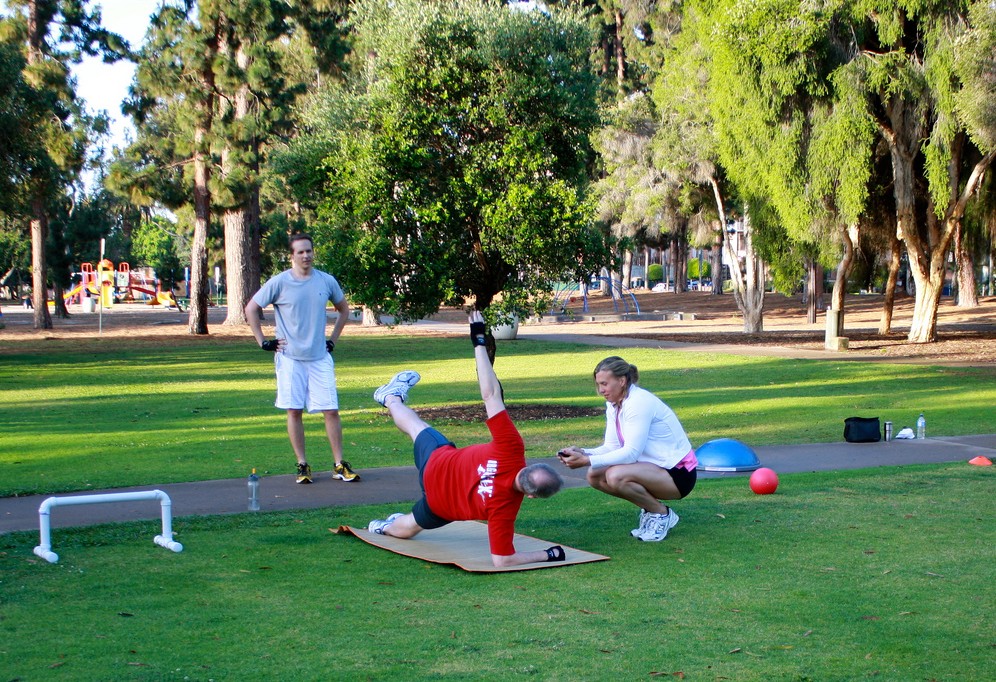
Side Planks
Side planks are a much greater challenge to core stability than regular planks. Where a plank isn't really much of a challenge for most experienced exercisers, side planks can be much more interesting. You can do them either with your arm at 45° to you and the elbow down, or at arm's length, which is a lot harder. Start with your legs together. As you progress, you can move on to doing these with your legs apart, strengthening your glutes and working your core at the same time. Really advanced exercisers might want to take a couple of plank variations and do them as a sequence!
- Important notification about information and brand names used in this slideshow!
- Photo courtesy of Chris Tina Bruce by Flickr : www.flickr.com/photos/christinafoxx/5777805642/
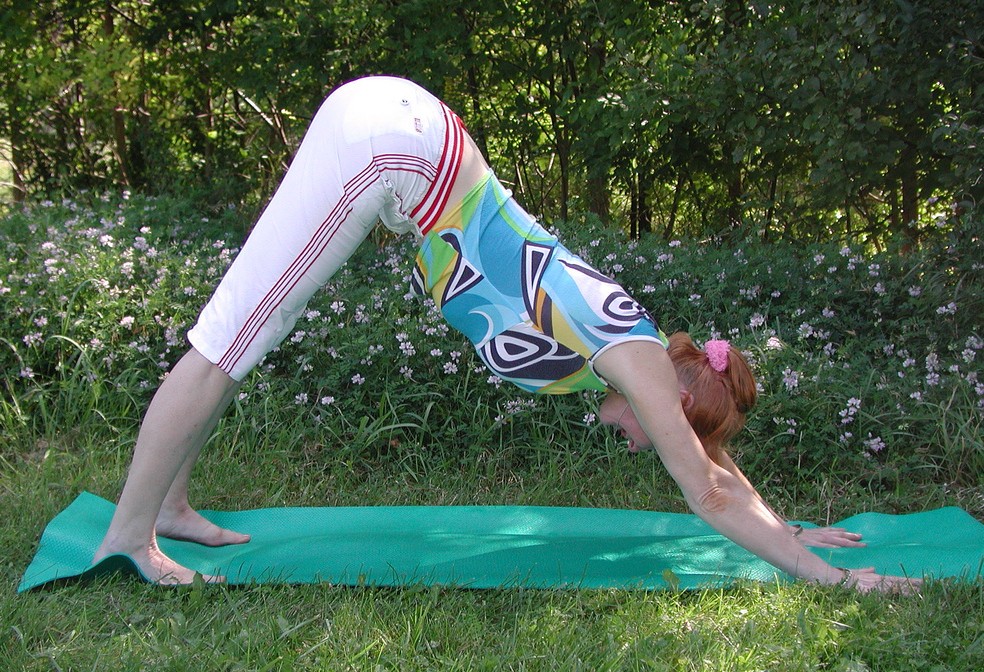
Hand Walkouts
Hand walkouts are one of the toughest core exercises you can do and they don't take any equipment at all. Start either in the top position of a Hindu pushup - downward facing dog to yoga fans - or the top of a regular pushup; experiment with both and pick the one you like, or change them around when you get bored. Now walk your hands out forwards. When you're as far out as you think you can get, walk back and repeat. If you keep your hands shoulder width apart and stop short of full extension this exercise is hard. Take it out to where your nose is almost on the floor and you'll realize you don't need to do this for many reps!
- Important notification about information and brand names used in this slideshow!
- Photo courtesy of Sarahsvati #1 by Flickr : www.flickr.com/photos/82376679@N04/8152405173/


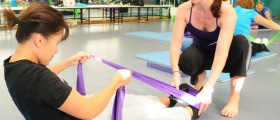
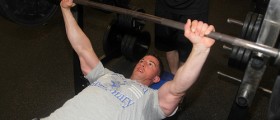
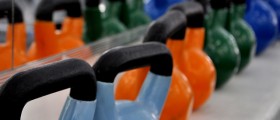
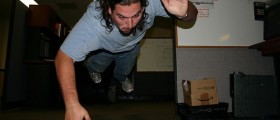
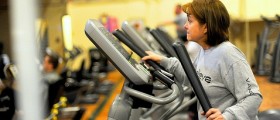
_f_280x120.jpg)
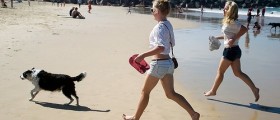
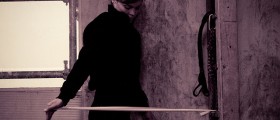

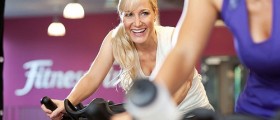
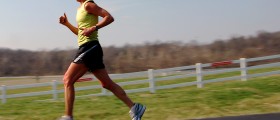
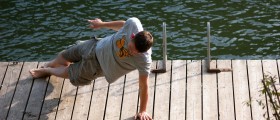
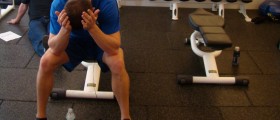



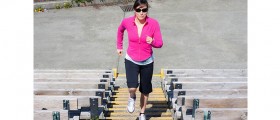
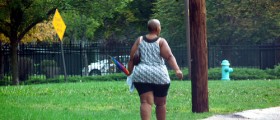
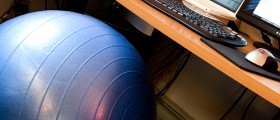
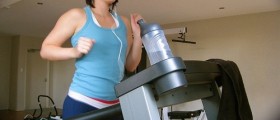
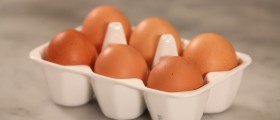
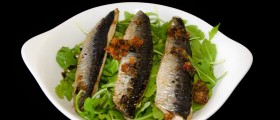
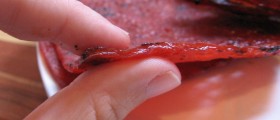
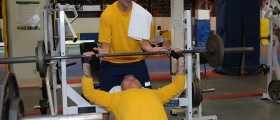
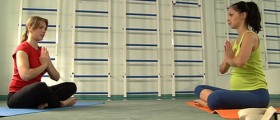
Your thoughts on this
Loading...